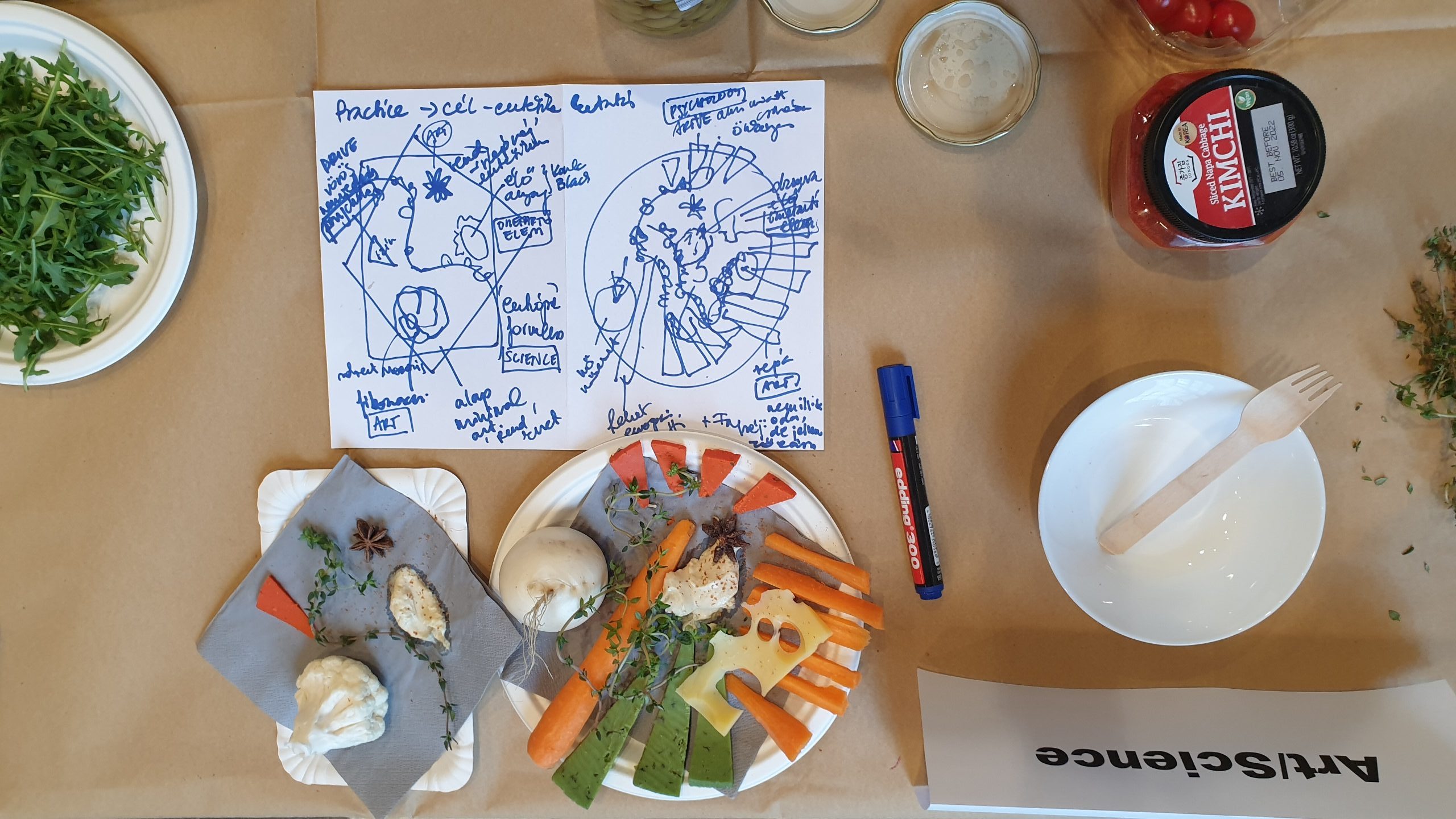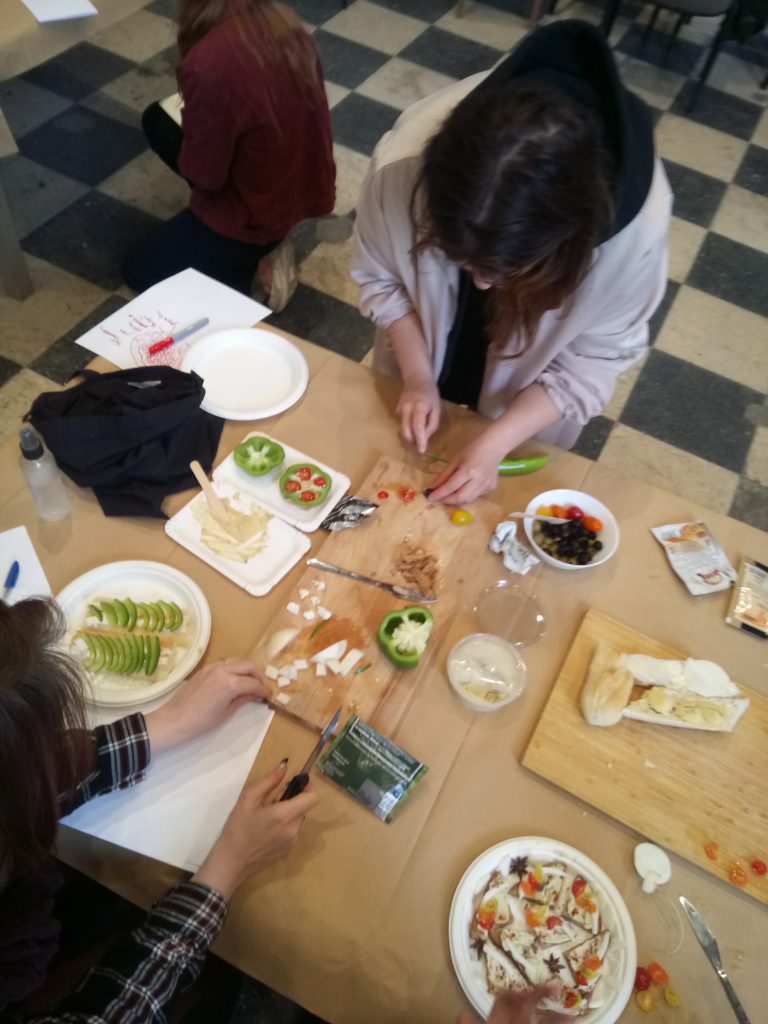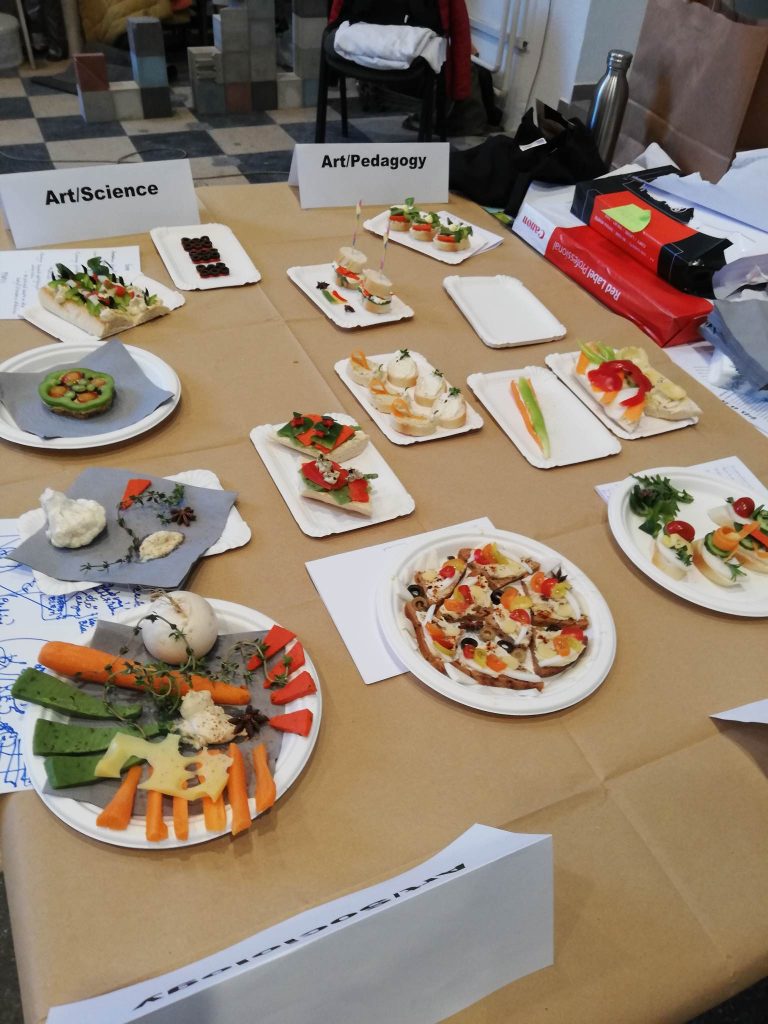Assignment:
Create a sandwich in which the types and proportions of the ingredients modells the diversity of the theoretical sources your research relies on. Start with a recipe (the correspondence and proportions of the ingredients)!

Methodology/description/concept:
Using food in an art context has a long history that culminated mostly in relational art practices (Bourriaud) in which the emphasis was placed on the act of collective cooking and eating as a transformative socio-cultural activity. Partly inspired by the works of artists such as Rirkrit Tiravanija, but channeling his concept towards the issue of artistic research, on the third afternoon of the block seminar the Art Fine Dining assignment was given. In this exercise, we developed further the short audio research summary and speed dating exercise that students drafted and recorded the previous day. During this latter task, students summarized their research to each other in brief 5-minute circular discussions.
The intended output of the assignment was to create one or more sandwiches using the available ingredients which were chosen to represent the diversity and proportions of the theoretical sources used throughout their own artistic research process.The objective was to use food-creation as a means to describe and communicate the core theoretical background structure of one’s research, while using eating as an intimate collective activity in which complex information can still be shared.
The course leaders prepared the food materials on a long table and more-or-less arbitrarily grouped them into four categories: Art/Science, Art/Art, Art/Pedagogy, Art/Sociology. In the first stage, the participants were invited to create a sandwich recipe based on the materials provided, matching each element to their research and defining their proportions accordingly. Once the recipe was completed, they started creating their own sandwiches. In addition, everyone had the opportunity to add their individually selected spices to the existing basics, as an analogy of the uniqueness of each and every individual research project.

From the beginning, the students set out to discover the various possible relationships between the four established categories and merged the ingredients of each category into a specific combination.
The exercise concluded with a culinary guided tour, where the sandwiches were placed in a matrix of the four categories, introduced by their makers and discussed collectively in reference to the individual research specificities.

